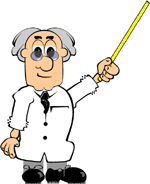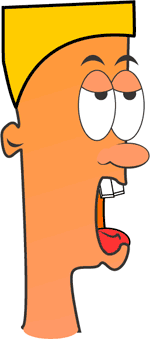 Orthodontic techniques
Orthodontic techniques are for teeth, not muscles. Yet it is the bad habits of the muscles – especially the lips and tongue – that cause underdeveloped jaws and unattractive looking faces. These bad oral habits also produce poor facial appearance.
Most people assume that facial development problems plus crowded or protruding teeth are hereditary. It is a fact that while some are, most are the result of poor oral habits. These bad oral habits are both preventable and treatable, and at ages much younger than those for orthodontic procedures.
The primary causes are mouth breathing, incorrect tongue positioning, incorrect swallowing patterns and overactive (lip) muscles. These are the bad oral habits that cause the problems we see with the teeth and jaws. Thumb sucking also causes the jaws to grow incorrectly. Children demonstrating any of these habits are most likely to develop crowded teeth and unattractive faces.
Once all the second teeth are present this incorrect growth of the jaws and the face is more difficult to correct. Extracting teeth does not help.
Many children have extractions and braces, but the facial development does not improve because the underlying problems have not been corrected. This may also result in the crowding reoccuring after orthodontic treatment.
The soft tissues control dental position and should be treated in conjunction with any orthodontic treatment.
By understanding the potential damage these seemingly innocent childhood habits can cause, you can tell which kids will have orthodontic problems and an unattractive face for life.
The accompanying chart (above) has been published in many dental and orthodontic journals around the world. It illustrates very clearly how little force is required to move teeth and just how much force the incorrect habits of the lips and tongue are capable of exerting.
A normal upper arch should look like this. It forms that way because the tongue rests in the area between the upper teeth. There it counteracts the pressure of the cheeks, which would otherwise push the upper arch of the jaws in. But if a child sucks his thumb or breathes through his or her mouth for any reason then the tongue drops from the top of the mouth and the upper arch can get pushed in causing crowding and crooked teeth.
It’s not a matter of big teeth either. I’ve created a classic situation of crowded teeth by pressing on the jawline of a dental study model. I release the pressure and now they’re not crowded... the tooth size hasn’t changed.

Orthodontic treatment can not be stable and facial development will be severely compromised unless the bad oral problems are corrected.
Here are two very typical stories doctors hear from parents all the time:
•
PARENT 1
“I noticed that my 7 year old daughter had crooked teeth and an overbite that was really pronounced. So, I took her to the school Dentist who then referred me to an Orthodontist.
Both said they couldn’t do anything for her and to wait till she was a teenager when she would have braces.
I could not accept that, so I took her to see my Dentist who said the same thing... “can’t do anything yet, she is too young.”
•
PARENT 2
“My 6 year old girl’s teeth were coming out very crowded. The Dentist told me there was no room for her teeth, they were too big for her jaws. He said, in a few years when the new teeth finish coming, they would take some out and put braces on to straighten the rest.
It just didn’t seem right. Why wait so for long and then make her suffer by having her teeth pulled out?”
A child at the age of five or six will show signs of incorrect facial growth if they have mouth breathing or tongue thrusting habits.
These problems do not “just go away” and the face will continue to develop incorrectly.
 Orthodontic techniques are for teeth, not muscles. Yet it is the bad habits of the muscles – especially the lips and tongue – that cause underdeveloped jaws and unattractive looking faces. These bad oral habits also produce poor facial appearance.
Orthodontic techniques are for teeth, not muscles. Yet it is the bad habits of the muscles – especially the lips and tongue – that cause underdeveloped jaws and unattractive looking faces. These bad oral habits also produce poor facial appearance. Orthodontic treatment can not be stable and facial development will be severely compromised unless the bad oral problems are corrected.
Orthodontic treatment can not be stable and facial development will be severely compromised unless the bad oral problems are corrected.